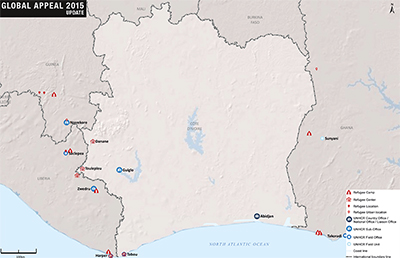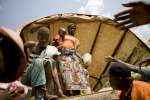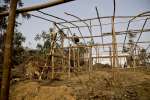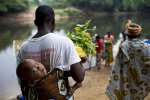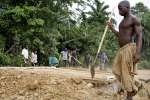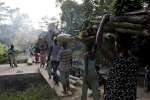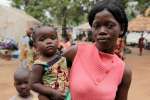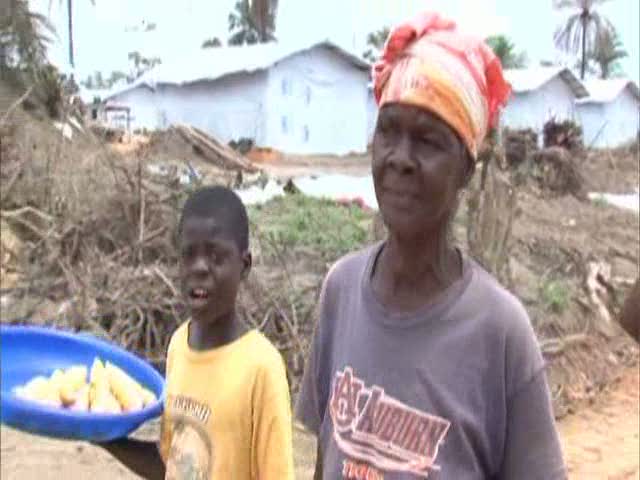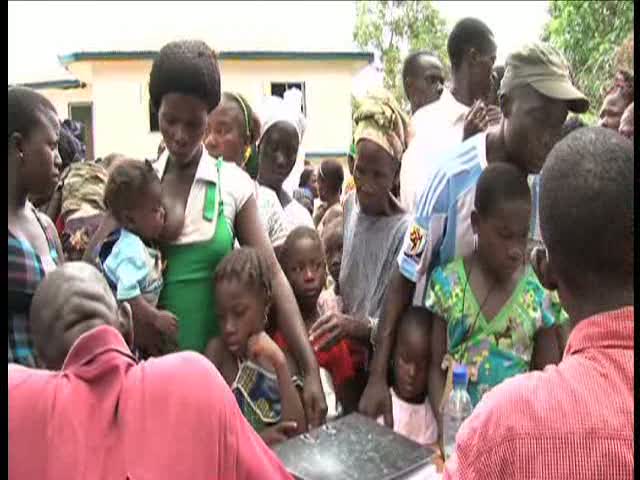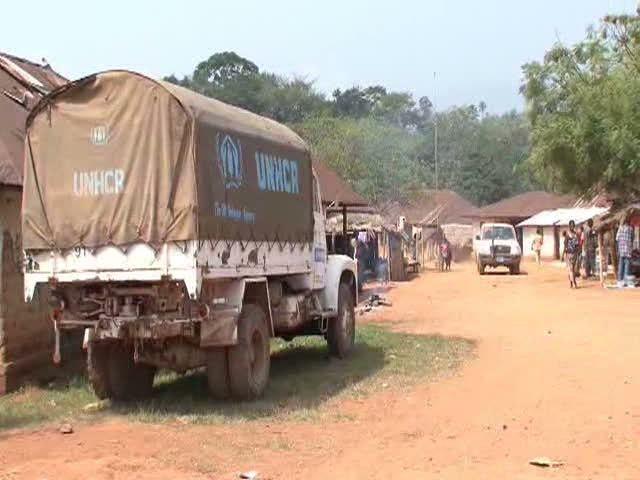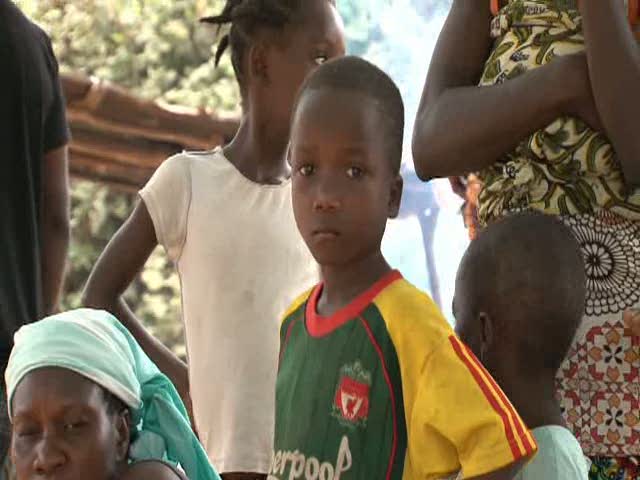Home > Where We Work > Africa > West Africa > Côte d'Ivoire
2015 UNHCR country operations profile - Côte d'Ivoire
| Overview |
Working environment
-
One of UNHCR's main priorities in Côte d'Ivoire is the voluntary repatriation of Ivorian refugees in neighbouring countries. More than 12,000 refugees have been repatriated during the first semester of 2014.
-
UNHCR's operation in Côte d'Ivoire has been significantly affected by the Ebola virus outbreak since the first quarter of 2014. Following the official border closure with Guinea and Liberia in August, the voluntary repatriation of Ivorian refugees has been suspended until further notice.
-
With the exception of recent attacks in the south-western border region of Côte d'Ivoire, the security conditions throughout the country remain stable.
-
In light of the UN Secretary-General's choice of Côte d'Ivoire as a pilot country for a durable solutions strategy, UNHCR will support the Government in designing and implementing targeted responses to the needs of returnees, former internally displaced people (IDPs), stateless people and host communities.
-
UNHCR is committed to finding solutions, either through local integration or resettlement, for remaining Liberians and Rwandans living in Côte d'Ivoire whose refugee status was maintained after the implementation of the cessation clause. Those individuals exempt from the cessation clauses will continue to receive international protection.
-
In acceding to the 1954 and 1961 Conventions on Statelessness in late 2013, the Ivorian Government took an important step towards reducing the number of stateless people in Côte d'Ivoire. UNHCR will continue to support such efforts by identifying stateless people across the country and advocate for concrete measures to protect them.
People of concern
UNHCR's main populations of concern in Côte d'Ivoire in 2015 are Ivorians (former refugees) who fled Côte d'Ivoire during the post-electoral violence in 2010-2011 and have returned; stateless people and people at risk of statelessness in the country; and refugees, mainly from Liberia.
| UNHCR 2015 planning figures for Cote d'Ivoire | |||||
|---|---|---|---|---|---|
| Type of population | Origin | January 2015 | December 2015 | ||
| Total in country | Of whom assisted by UNHCR |
Total in country | Of whom assisted by UNHCR |
||
| Total | 746,030 | 116,030 | 627,000 | 72,990 | |
| Refugees | Congo | 160 | 160 | 160 | 160 |
| Dem. Rep. of the Congo | 160 | 160 | 160 | 160 | |
| Liberia | 900 | 900 | 900 | 900 | |
| Various | 300 | 300 | 800 | 800 | |
| Asylum-seekers | Dem. Rep. of the Congo | 60 | 60 | 60 | 60 |
| Liberia | 100 | 100 | 70 | 70 | |
| Nigeria | 50 | 50 | 50 | 40 | |
| Various | 300 | 300 | 800 | 800 | |
| Returnee arrivals during year (ex-refugees) | Côte d'Ivoire | 20,000 | 20,000 | 20,000 | 20,000 |
| Internally displaced | Côte d'Ivoire | 4,000 | 4,000 | - | - |
| Returnee arrivals during year (ex-IDPs) | Côte d'Ivoire | 20,000 | - | 4,000 | - |
| Stateless | Stateless | 700,000 | 90,000 | 600,000 | 50,000 |
| Response |
Needs and strategies
In 2015, UNHCR will continue to advocate for the adoption and implementation of a national asylum law on behalf of refugees living in Côte d'Ivoire. If adopted, the organization will engage in capacity-building exercises targeted at newly-appointed local officials in border areas that have not traditionally hosted refugees, and raise awareness throughout Ivorian society to ensure that the content and implications of the law are well understood.
To support the UN Secretary-General's Policy Committee Decision on Durable Solutions and assist the Government in its national development plan, UNHCR will implement community-based programmes to address the needs and improve the living conditions of refugees, returnees, former IDPs and stateless people in major areas of settlement.
Building on momentum generated by the launch of UNHCR's global campaign to eradicate statelessness, the Office will work with the Ministry of Justice, Human Rights and Public Liberties to identify people who are stateless or at risk of statelessness, and support national institutions in providing these individuals with civil status documentation. By helping them obtain confirmation of nationality, UNHCR will help tens of thousands of people access basic social services to which they are entitled.
| Implementation |
Coordination
UNHCR will maintain its partnerships with the Government of Côte d'Ivoire, UN agencies and national and international NGOs. The organization will continue to participate in inter-agency coordination mechanisms, such as the UN Country Team, the UN Development Action Framework and the Comité de coordination élargi, which was created in July 2013 to replace the cluster system and transfer responsibility for humanitarian and development matters to the authorities. The Office will continue to oversee the implementation of the UN Secretary-General's Policy Committee Decision on Durable Solutions, which seeks to provide a comprehensive response to the needs of returning populations and their host communities.
| 2015 UNHCR partners in Côte d'Ivoire |
|---|
| Implementing partners |
| Government agencies: Ministry of Justice, Human Rights and Public Liberties, Ministry of Foreign Affairs |
| NGOs: Association de Soutien à l'Autopromotion Sanitaire Urbaine, Danish Refugee Council, Norwegian Refugee Council, Search for Common Ground |
| Others: FAO, IOM, UN Women, UNOPS |
| Operational partners |
| Government agencies: Ministry of the Family, Women and Social Affairs, Ministry of Planning and Development, Ministry of State, Ministry of Health |
| NGOs: International Rescue Committee, Save the Children International |
| Others: ICRC, OCHA, UNDP, UNESCO, UNICEF, UNIDO, WFP |
| Financial information |
Between 2011 and 2013, financial requirements for UNHCR's programme in Côte d'Ivoire decreased significantly, from USD 47 million to USD 27.8 million.
Over the past two years, UNHCR has been establishing and maintaining an alliance of key players, notably UN agencies such as UNFPA, UNICEF and WFP, which took over some of the Office's unfunded activities.
In 2015, some USD 26 million will be needed for UNHCR to provide protection and assistance to former Ivorian refugees, as well as IDPs, stateless people and refugees in the country.
Source: UNHCR Global Appeal 2015 Update

